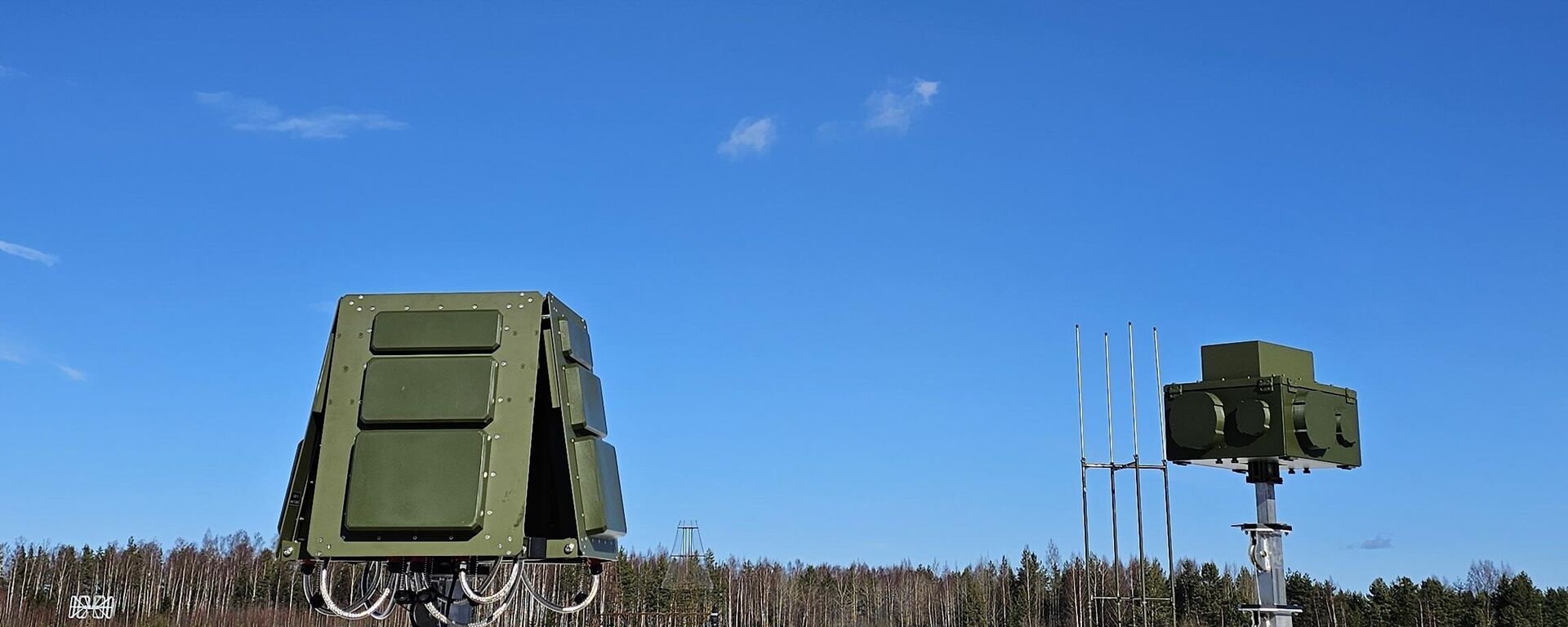https://sputnikglobe.com/20231229/drone-wars-how-russia-can-crack-new-ukrainian-uav-tactic-1115871879.html
Drone Wars: How Russia Can Crack New Ukrainian UAV Tactic
Drone Wars: How Russia Can Crack New Ukrainian UAV Tactic
Sputnik International
Ukrainian forces have developed a new drone strike strategy, but Russian troops are responding by bolstering their defense and reconnaissance capabilities.
2023-12-29T07:18+0000
2023-12-29T07:18+0000
2023-12-29T07:18+0000
analysis
ukrainian crisis
drone warfare
https://cdn1.img.sputnikglobe.com/img/07e7/0c/1d/1115872058_0:160:3072:1888_1920x0_80_0_0_d3e5ee70c7d04e3fdba60b4955aeb5ea.jpg
According to DPR military sources working on the Avdeevka Front, a major influx ("in abundance") of FPV attack drones to the UAF in Avdeevka has resulted in new and dangerous tactic being employed by UAF/NATO drone operators against DPR/RF soldiers. The high volume of attack drones delivered to the remaining UAF Special Forces and Western mercenaries in Avdeevka now allow them to launch hunter/killer drones in pairs, a new tactic, which makes them more dangerous and effective.The drones, and the operators, work in close proximity, which allows real time communication between the operators, and much more effective detection and destruction of identified targets by two attack drones instead of one. If you have plenty of attack drones, the previous tactic of one recon/observation drone working with one attack drone becomes obsolete. Which now appears to be the case.This "abundance" of attack drones and skilled UKR/NATO pilots has the following results - If one attack drone finds a target, they inform the second drone operator and attack. The first one hits the target, then the second one finishes off the target, usually repeating the trajectory of the first attack, or waiting a few minutes until help arrives for those hit by the first drone, and then targeting them again.This new tactic is aimed at:1) Increasing the probability of detecting, hitting and destroying the target.2) Hitting targets behind protective barriers (the first one breaks the barrier, the second one passes through the broken barrier and hits the target.)3) Reducing flight time to the target of the second UAV and the chances of taking cover or closing a gap in the defense against the second drone attack.4) Attacking soldiers providing assistance, finish off shell-shocked or immobilized soldiers, and target doctors and medics.However, Russian soldiers in the field are already taking countermeasures of their own, such as additional layers of anti-drone (metal/nylon barriers) protection, moving on foot in a more dispersed column (15 meters apart, instead of 5), enhanced audio recon (listen for the sound of flying mopeds), and the use of thermal imagers (motors and batteries are hot and can be detected against the sky).The effectiveness of this new Ukrainian tactic can be further reduced by deploying more drone detectors, anti-drone rifles, thermal imagers, and enhanced listening devices to the frontlines. Additionally, if Russia continues increasing the delivery of its own attack drones, then our pilots can employ the same technique against the Ukrainians.Enemy drone operators and launching sites should be made priority targets by official doctrine.These new tactics have just recently been employed by the enemy in the Avdeevka combat zone, but there is no doubt they will be employed in other areas along the Front, very soon, if not already. We must respond accordingly, and immediately. Our guys' lives depend on it.
https://sputnikglobe.com/20231228/hammerless-sickle-russia-successfully-tests-new-anti-drone-system-1115852348.html
Sputnik International
feedback@sputniknews.com
+74956456601
MIA „Rossiya Segodnya“
2023
Russell Bentley
https://cdn1.img.sputnikglobe.com/img/07e6/03/1d/1094281697_332:0:1182:850_100x100_80_0_0_f4d7604e530b3861449b2db55c72f353.jpg
Russell Bentley
https://cdn1.img.sputnikglobe.com/img/07e6/03/1d/1094281697_332:0:1182:850_100x100_80_0_0_f4d7604e530b3861449b2db55c72f353.jpg
News
en_EN
Sputnik International
feedback@sputniknews.com
+74956456601
MIA „Rossiya Segodnya“
Sputnik International
feedback@sputniknews.com
+74956456601
MIA „Rossiya Segodnya“
Russell Bentley
https://cdn1.img.sputnikglobe.com/img/07e6/03/1d/1094281697_332:0:1182:850_100x100_80_0_0_f4d7604e530b3861449b2db55c72f353.jpg
russia' special military operation, ukrainian crisis, drone warfare, anti-drone gun, drone tactics
russia' special military operation, ukrainian crisis, drone warfare, anti-drone gun, drone tactics
Drone Wars: How Russia Can Crack New Ukrainian UAV Tactic
Ukrainian forces have developed a new drone strike strategy, but Russian troops are responding by bolstering their defense and reconnaissance capabilities.
According to DPR military sources working on the Avdeevka Front, a major influx ("in abundance") of FPV attack drones to the UAF in Avdeevka has resulted in new and dangerous tactic being employed by UAF/NATO drone operators against DPR/RF soldiers. The high volume of attack drones delivered to the remaining UAF Special Forces and Western mercenaries in Avdeevka now allow them to launch hunter/killer drones in pairs, a new tactic, which makes them more dangerous and effective.

28 December 2023, 12:52 GMT
The drones, and the operators, work in close proximity, which allows real time communication between the operators, and much more effective detection and destruction of identified targets by two attack drones instead of one. If you have plenty of attack drones, the previous tactic of one recon/observation drone working with one attack drone becomes obsolete. Which now appears to be the case.
This "abundance" of attack drones and skilled UKR/NATO pilots has the following results - If one attack drone finds a target, they inform the second drone operator and attack. The first one hits the target, then the second one finishes off the target, usually repeating the trajectory of the first attack, or waiting a few minutes until help arrives for those hit by the first drone, and then targeting them again.
This new tactic is aimed at:
1) Increasing the probability of detecting, hitting and destroying the target.
2) Hitting targets behind protective barriers (the first one breaks the barrier, the second one passes through the broken barrier and hits the target.)
3) Reducing flight time to the target of the second UAV and the chances of taking cover or closing a gap in the defense against the second drone attack.
4) Attacking soldiers providing assistance, finish off shell-shocked or immobilized soldiers, and target doctors and medics.
However, Russian soldiers in the field are already taking countermeasures of their own, such as additional layers of anti-drone (metal/nylon barriers) protection, moving on foot in a more dispersed column (15 meters apart, instead of 5), enhanced audio recon (listen for the sound of flying mopeds), and the use of thermal imagers (motors and batteries are hot and can be detected against the sky).
The effectiveness of this new Ukrainian tactic can be further reduced by deploying more drone detectors, anti-drone rifles, thermal imagers, and enhanced listening devices to the frontlines. Additionally, if Russia continues increasing the delivery of its own attack drones, then our pilots can employ the same technique against the Ukrainians.
Enemy drone operators and launching sites should be made priority targets by official doctrine.
These new tactics have just recently been employed by the enemy in the Avdeevka combat zone, but there is no doubt they will be employed in other areas along the Front, very soon, if not already. We must respond accordingly, and immediately. Our guys' lives depend on it.




